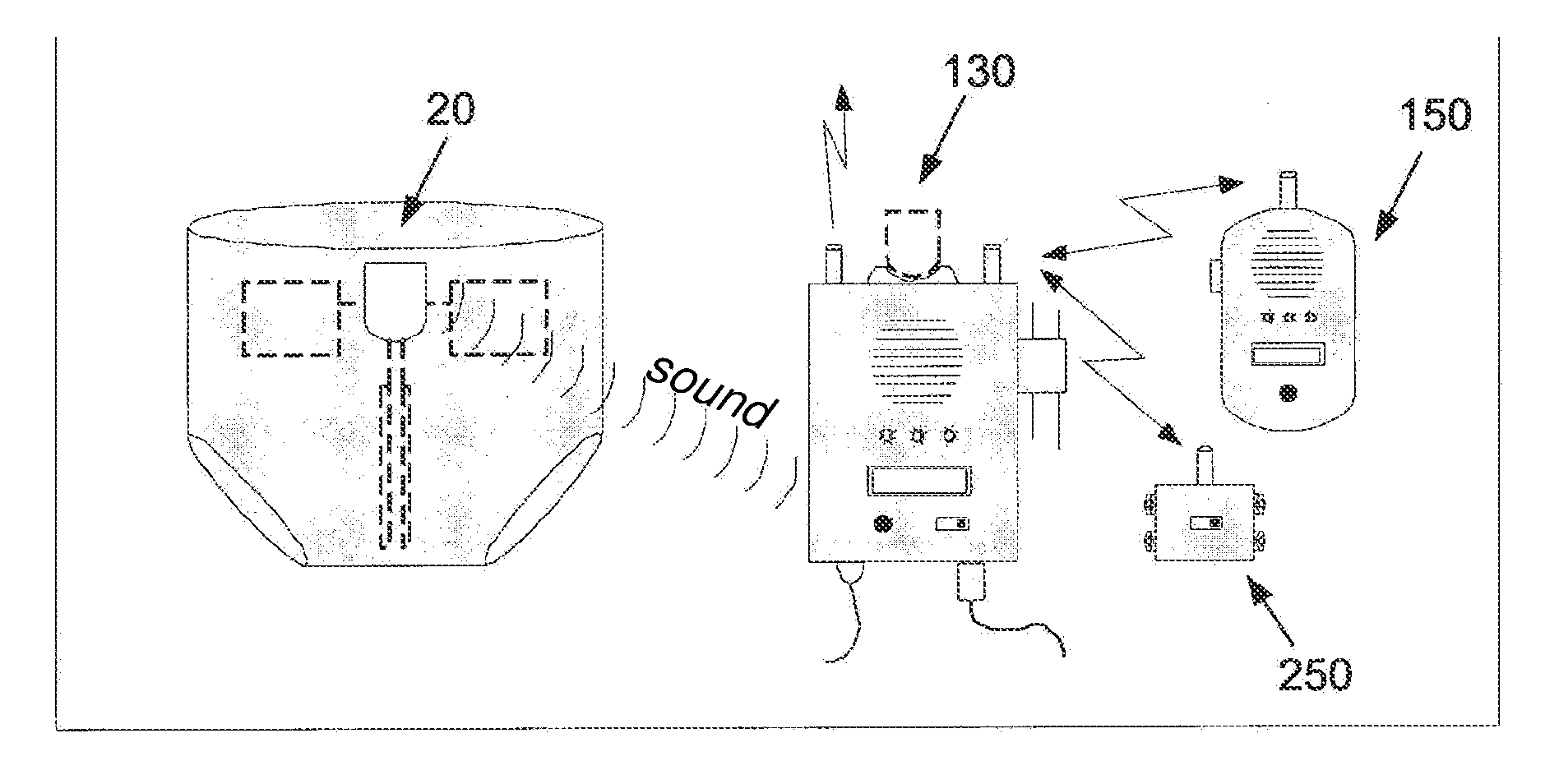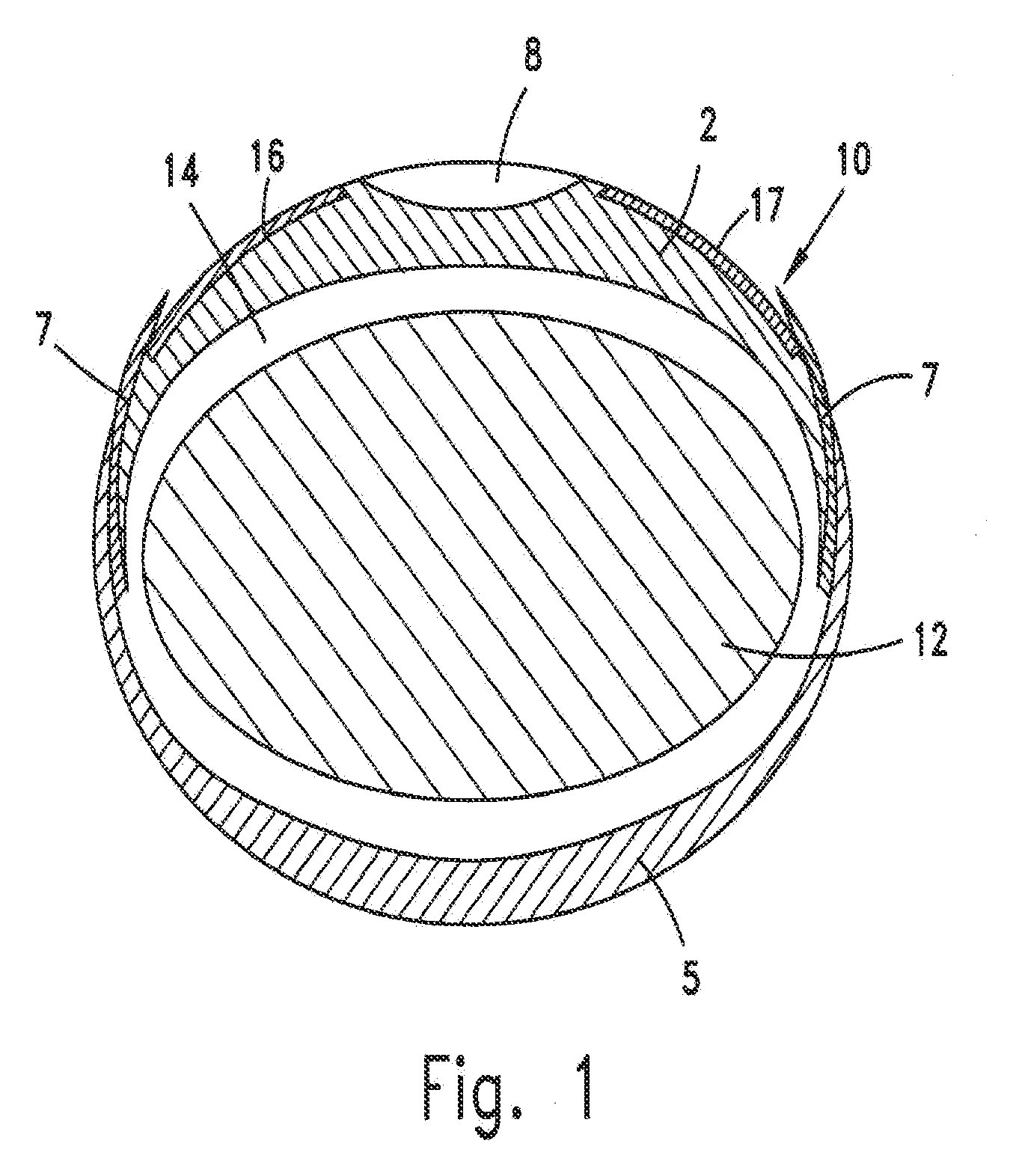Apnea detector and system
a technology of apnea detection and apnea detection system, which is applied in the field of apnea detection system, can solve the problems of inability to detect apnea in infants, high manufacturing cost of type of detector, and easy sleep apnea in adults
- Summary
- Abstract
- Description
- Claims
- Application Information
AI Technical Summary
Benefits of technology
Problems solved by technology
Method used
Image
Examples
Embodiment Construction
[0134]The present invention is a novel detector and monitoring system for apnea, and particularly for infant apnea. A detector unit, which is attached to a clothing article of the subject, is in communication with a sensor which may be ultra-thin, e.g. having a thickness of less than 1 mm. Due to its thin size and cost-effective manufacturing methods, such as being printed by conductive ink, hot foil stamping, conductive polymer tape, and vacuum metallization, the sensor is of low cost and can therefore be sold as a disposable product. The detector unit is integrated with a system, which will be described hereinafter, for instantly alerting an attendant once apnea is detected. Even though the apnea detector is in constant use, the subject is generally not exposed to close-proximity radio frequency radiation.
[0135]When the subject is an infant, a detector unit is embedded in, or otherwise attached to, a diaper, and due to its ergonomic configuration by which substantially no discomfo...
PUM
 Login to View More
Login to View More Abstract
Description
Claims
Application Information
 Login to View More
Login to View More - R&D
- Intellectual Property
- Life Sciences
- Materials
- Tech Scout
- Unparalleled Data Quality
- Higher Quality Content
- 60% Fewer Hallucinations
Browse by: Latest US Patents, China's latest patents, Technical Efficacy Thesaurus, Application Domain, Technology Topic, Popular Technical Reports.
© 2025 PatSnap. All rights reserved.Legal|Privacy policy|Modern Slavery Act Transparency Statement|Sitemap|About US| Contact US: help@patsnap.com



